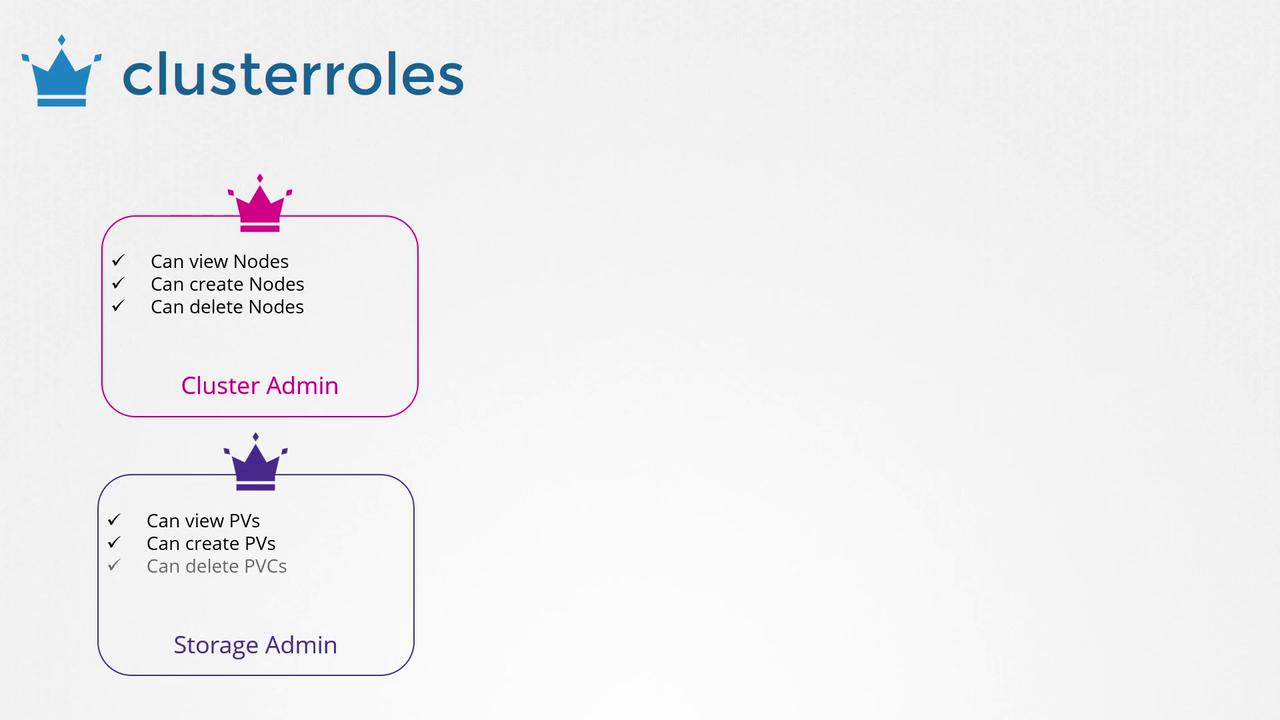Certified Kubernetes Security Specialist (CKS)
Cluster Setup and Hardening
Cluster Roles and Role Bindings
In previous lessons, we explored namespaced roles and role bindings. In this section, we focus on cluster roles and cluster role bindings. Unlike namespaced roles—which grant permissions within a specific namespace (or the default namespace when none is specified)—cluster roles are used to control access to cluster-scoped resources.
Kubernetes Resource Classification
Kubernetes resources fall into two distinct groups:
- Namespaced resources (e.g., pods, replica sets, jobs, deployments, services, secrets)
- Cluster-scoped resources (e.g., nodes, persistent volumes, certificate signing requests, namespaces)

To view a complete list of namespaced and non-namespaced resources, run the following commands:
kubectl api-resources --namespaced=true
kubectl api-resources --namespaced=false
Note
For namespaced resources, roles and role bindings are used. However, when you need to grant permissions for cluster-wide resources such as nodes or persistent volumes, you should use cluster roles and cluster role bindings.
Use Case: Granting Cluster-Wide Permissions
Imagine you need to create a cluster role that allows a user to view, create, or delete nodes across the entire cluster. Similarly, you might need a storage administrator role to manage persistent volumes and persistent volume claims. The diagram below outlines a conceptual overview of these roles:

Defining a Cluster Role
Below is an example YAML file that defines a cluster role. Save the file as cluster-admin-role.yaml:
apiVersion: rbac.authorization.k8s.io/v1
kind: ClusterRole
metadata:
name: cluster-administrator
rules:
- apiGroups: [""]
resources: ["nodes"]
verbs: ["list", "get", "create", "delete"]
Binding the Cluster Role to a User
After creating the cluster role, you must create a cluster role binding to associate the user with this role. This binding grants the specified permissions across the cluster. Save the following configuration as cluster-admin-role-binding.yaml:
apiVersion: rbac.authorization.k8s.io/v1
kind: ClusterRoleBinding
metadata:
name: cluster-admin-role-binding
subjects:
- kind: User
name: cluster-admin
apiGroup: rbac.authorization.k8s.io
roleRef:
kind: ClusterRole
name: cluster-administrator
apiGroup: rbac.authorization.k8s.io
Apply these configurations using the following commands:
kubectl create -f cluster-admin-role.yaml
kubectl create -f cluster-admin-role-binding.yaml
Important Information
While cluster roles are primarily intended for cluster-scoped resources, they can also be used to grant permissions for namespaced resources. When applied in this context, the permissions extend across all namespaces, unlike a namespaced role that restricts access to a specific namespace.
Kubernetes automatically creates several default cluster roles during cluster setup. In practice tests, you may encounter these default roles in various configurations.
Happy studying and good luck with your Kubernetes journey!
Watch Video
Watch video content
Practice Lab
Practice lab